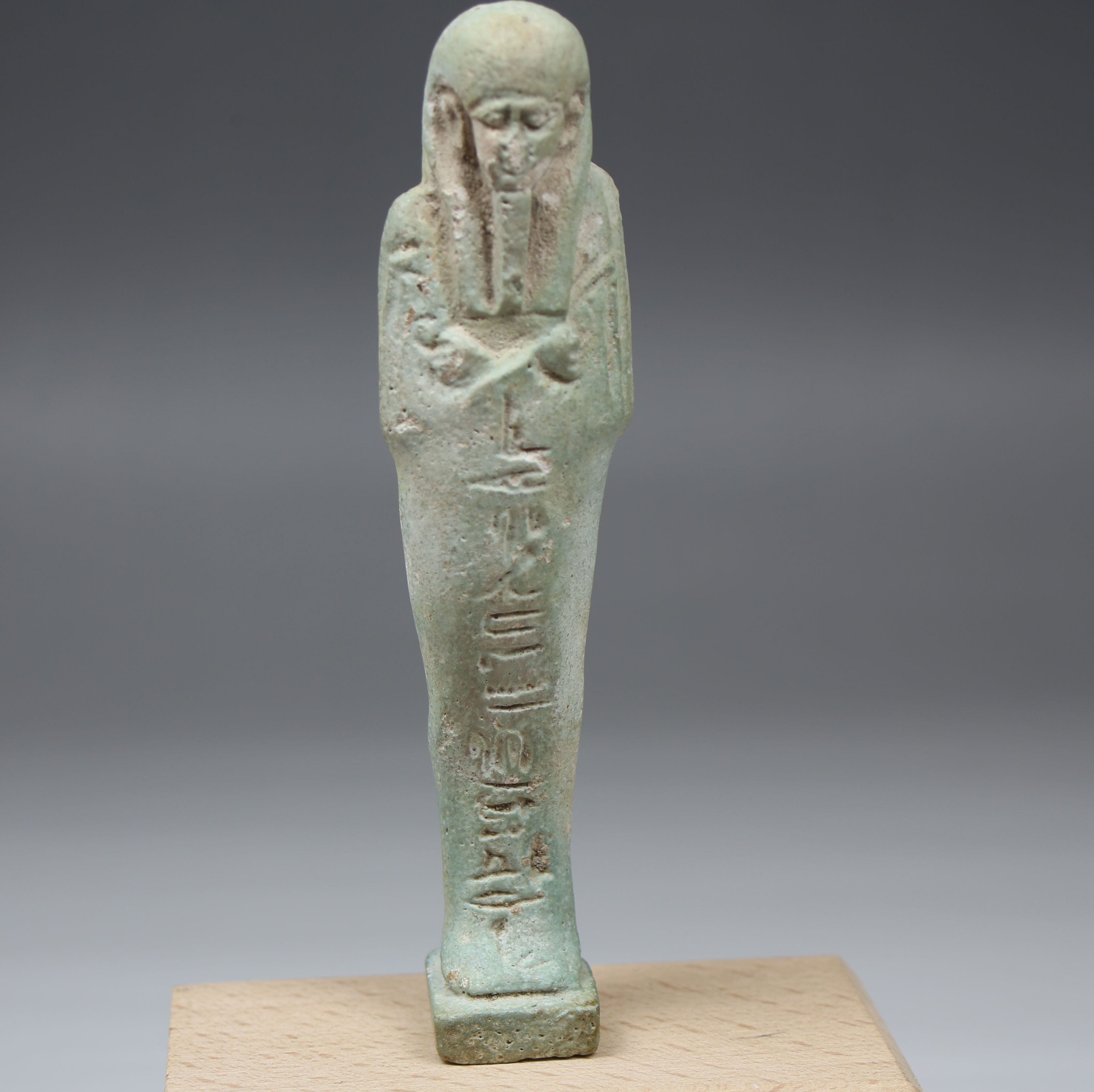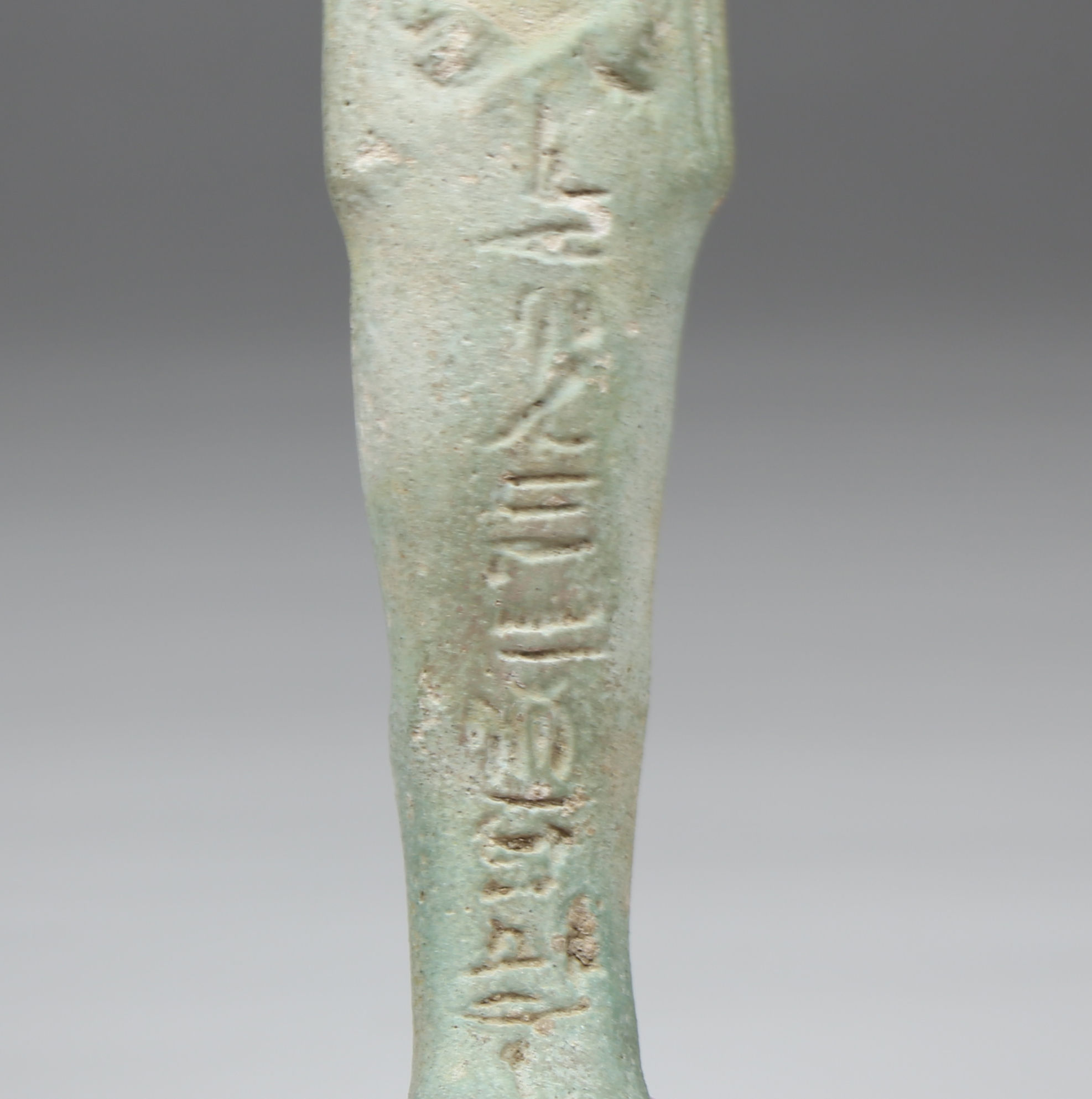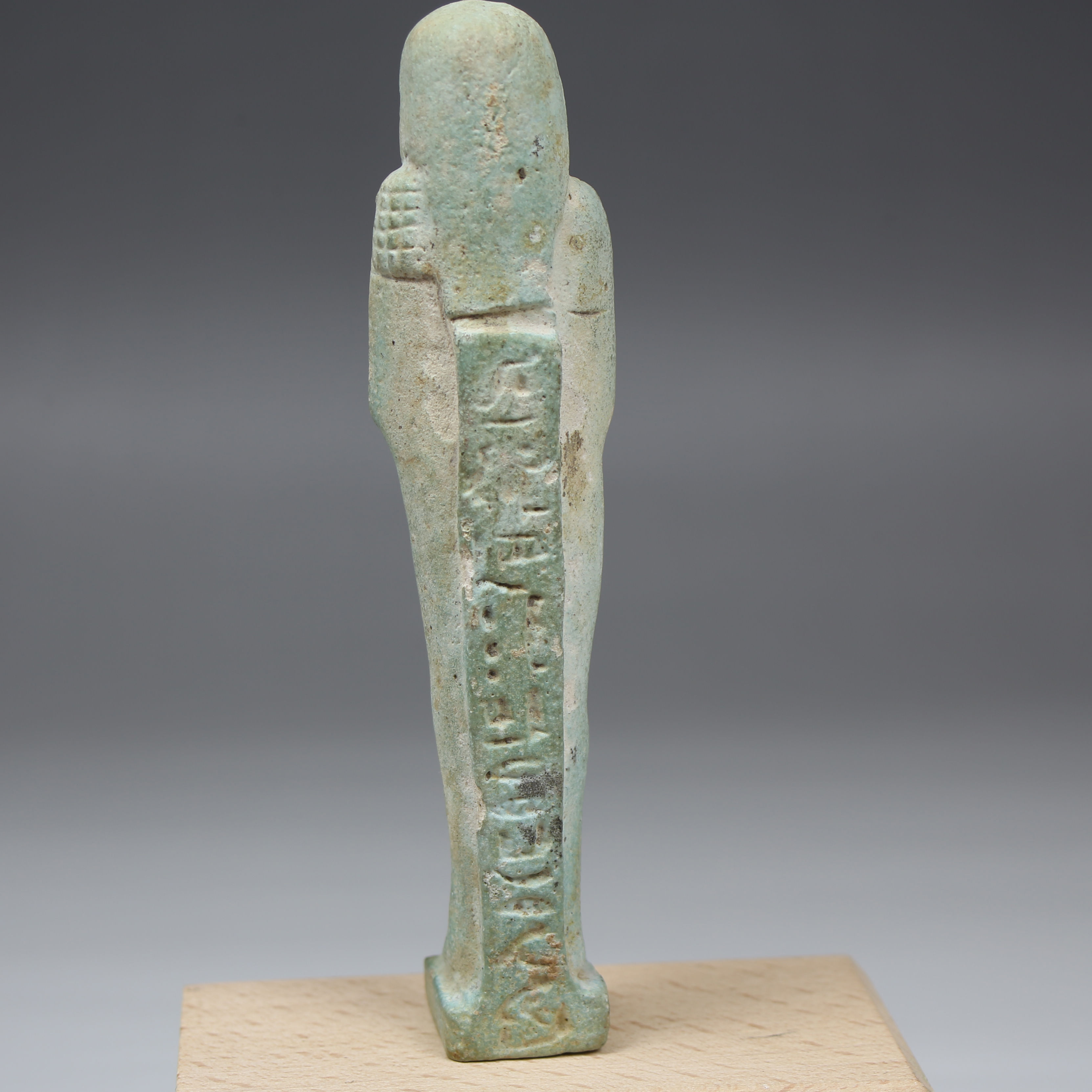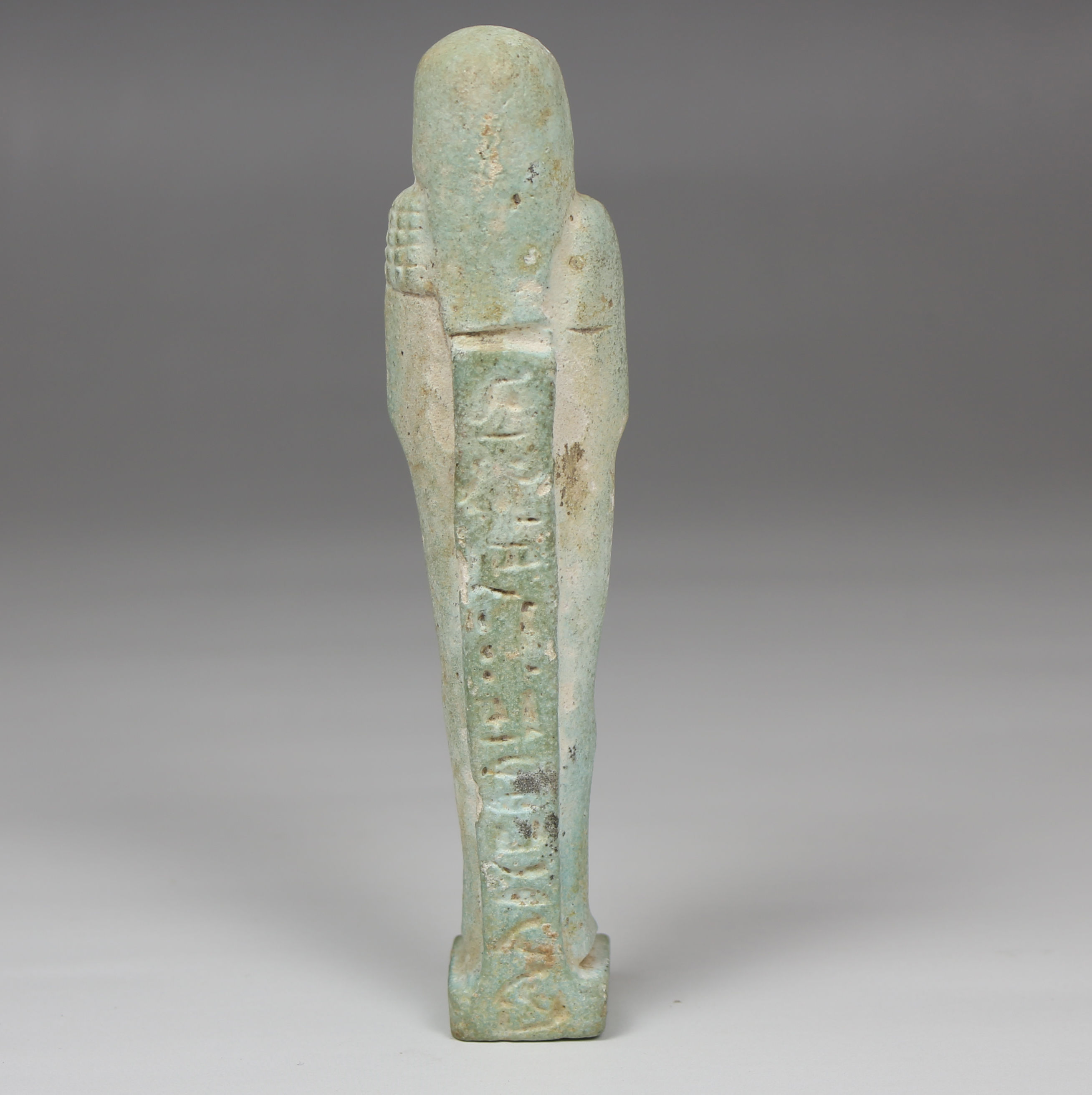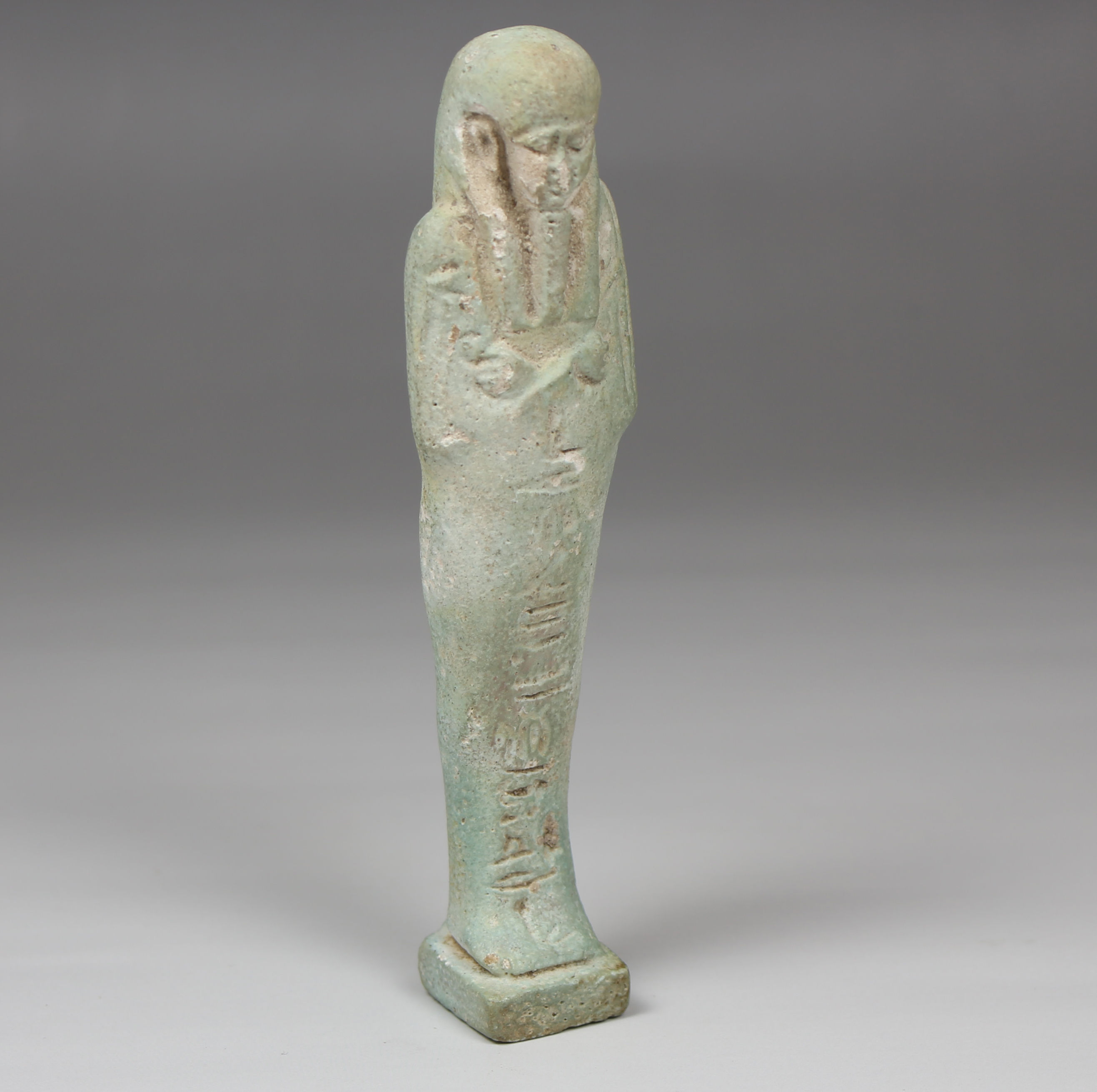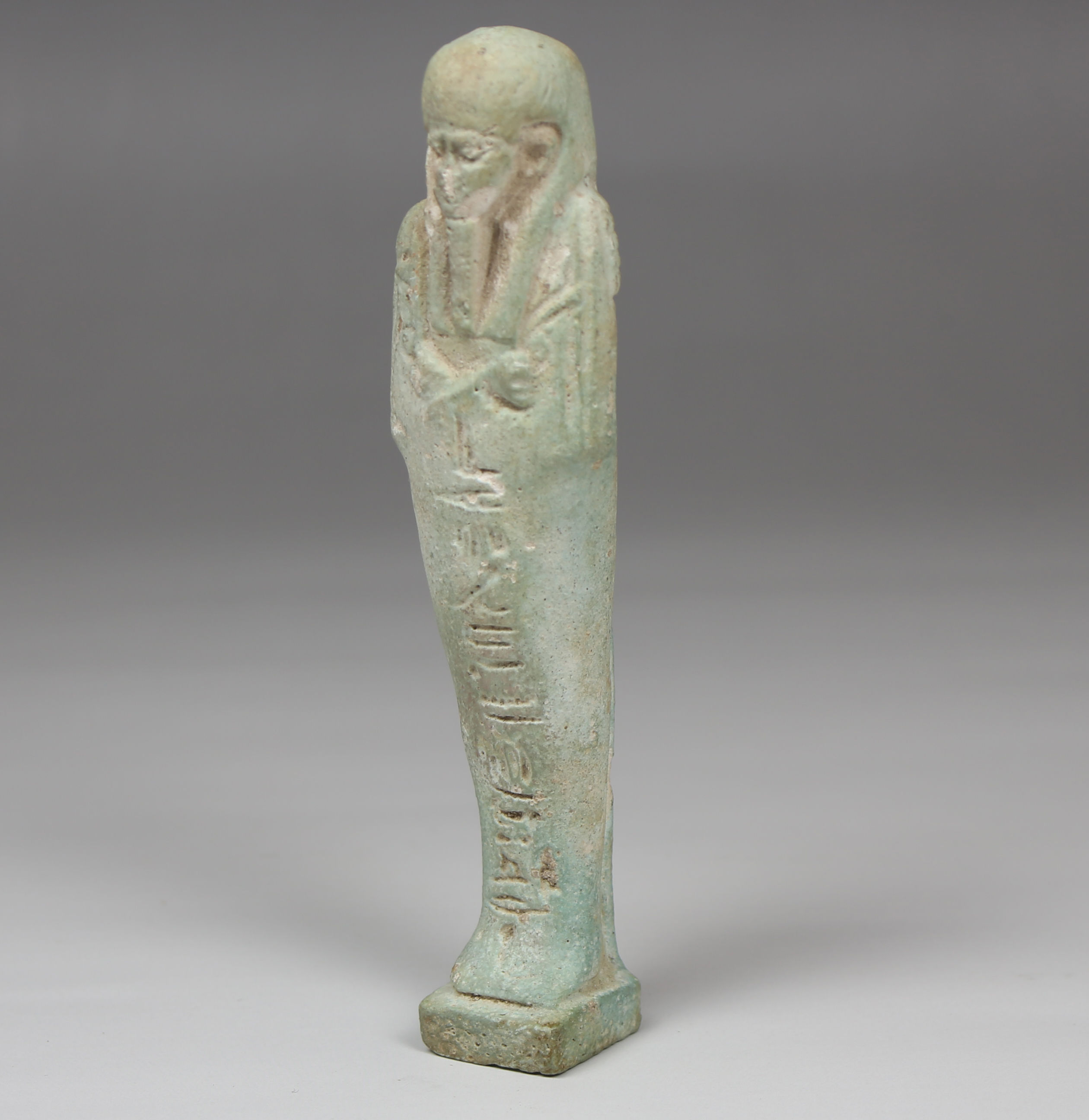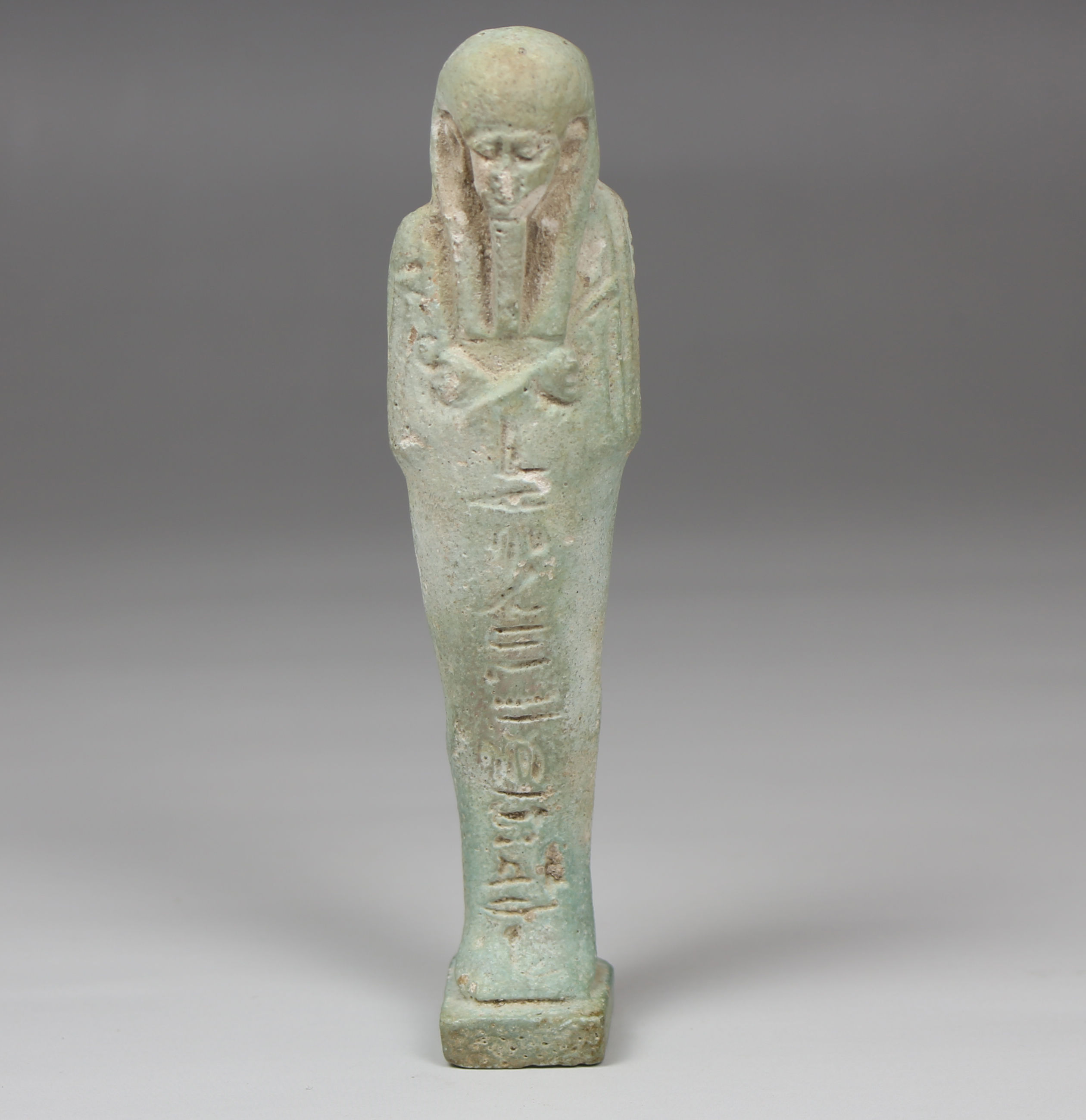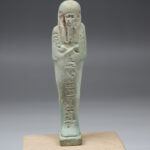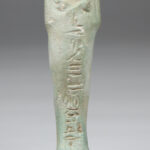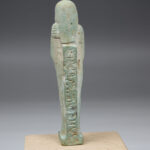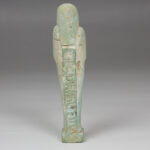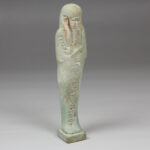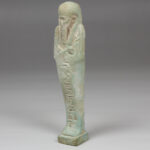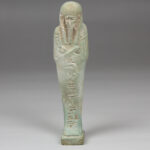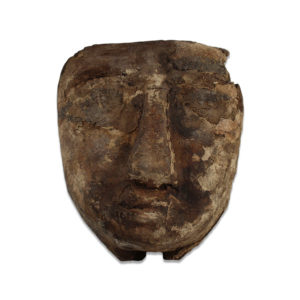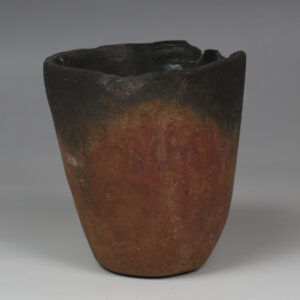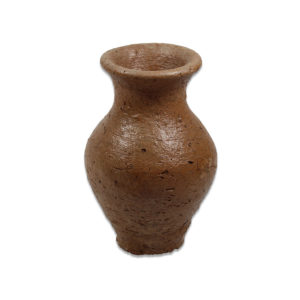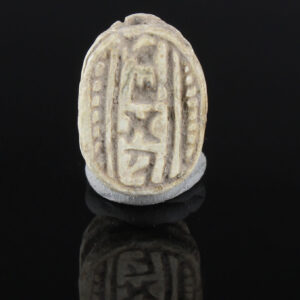Description
| ITEM | Shabti for Psamtekhen born to Nit-iy-et, back side with the formula ‘O thou shabti, if you are called to perform any work in…’ |
| MATERIAL | Faience |
| CULTURE | Egyptian |
| PERIOD | Late period, 664 – 332 B.C |
| DIMENSIONS | 112 mm x 27 mm |
| CONDITION | Good condition |
| PROVENANCE | Ex French private collection, acquired between 1960s – 1980s |
Shabtis, also known as ushabtis or shawabtis, were small figurines or statues placed in tombs to serve the deceased in the afterlife. They were believed to magically come to life and perform tasks on behalf of the deceased in the Field of Reeds, the idealized paradise in Egyptian mythology.
The Shabti for Psamtekhen is inscribed with a formula on its backside, which invokes the Shabti to perform any necessary work on behalf of the deceased in the afterlife. This formula is a variant of the commonly found “Shabti spell” or “Shabti formula,” which was intended to activate the Shabti’s duties. It reflects the ancient Egyptian belief in an afterlife where the deceased would continue to perform labor similar to their earthly responsibilities, and the Shabti was tasked with carrying out these duties on behalf of the deceased.
The inscription on the Shabti for Psamtekhen provides valuable insights into the religious beliefs and funerary practices of ancient Egypt. It demonstrates the importance of ensuring a comfortable and prosperous afterlife through the provision of servants and magical helpers, such as Shabtis, who would ensure that the deceased could continue their existence without interruption in the afterlife.


